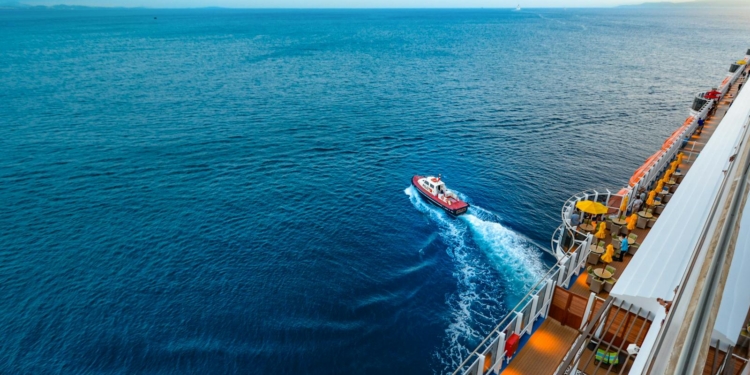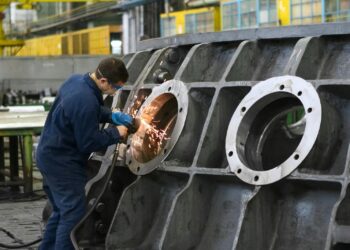The cruise industry, a juggernaut of global tourism, has long been synonymous with luxury, adventure, and unparalleled access to the world’s most breathtaking destinations. Yet, as the planet grapples with climate change, resource depletion, and environmental degradation, the industry faces mounting pressure to reconcile its operations with the urgent need for sustainability. Cruise ships, often described as floating cities, consume vast amounts of energy, generate significant waste, and contribute to carbon emissions on a scale that cannot be ignored. However, forward-thinking companies, including industry leader Celebrity Cruises, are steering the sector toward a greener future, embracing innovative technologies, sustainable practices, and a commitment to preserving the oceans they traverse. This article delves into the complex interplay between cruise ships and sustainability, spotlighting the efforts of Celebrity Cruises and other key players, such as Norwegian Cruise Line Holdings, in transforming an industry historically tethered to environmental challenges.
Navigating Green Waters: The Cruise Industry’s Journey Toward #Sustainability @CelebrityCruise @thepositive @CelebrityCruise: Official Celebrity Cruises account to highlight their sustainability efforts. @RoyalCaribbean
— Positive Phil™ (@thepositivephil) June 18, 2025
https://t.co/sQpOObx6wu
The Environmental Footprint of Cruise Ships
Cruise ships are marvels of engineering, capable of carrying thousands of passengers across vast oceans while providing amenities rivaling those of top-tier resorts. However, their environmental impact is substantial. A single large cruise ship can emit as much sulfur dioxide in a day as hundreds of thousands of cars, according to studies from the early 2010s, though stricter regulations have since reduced these figures. These vessels burn heavy fuel oil or marine diesel, contributing to greenhouse gas emissions, with the global cruise industry accounting for approximately 0.2% of global CO2 emissions, a figure that grows as the industry expands. Beyond emissions, cruise ships generate vast quantities of waste—food scraps, plastics, sewage, and graywater—that, if mismanaged, can harm marine ecosystems. Ballast water, used to stabilize ships, can also introduce invasive species, disrupting local biodiversity.
The scale of the challenge is daunting. A typical week-long cruise for 3,000 passengers can produce over 200,000 gallons of sewage, a million gallons of graywater, and thousands of pounds of solid waste. Air pollution from ship stacks, particularly in port cities, has raised health concerns for coastal communities. Yet, the industry’s visibility—cruises are a public-facing business reliant on customer goodwill—has driven companies to act. The question is no longer whether sustainability is necessary but how quickly and effectively it can be achieved.
Industry-Wide Shifts Toward Sustainability
The cruise industry’s sustainability journey is multifaceted, encompassing fuel innovation, waste management, energy efficiency, and community engagement. Regulatory frameworks, such as the International Maritime Organization’s (IMO) 2020 sulfur cap, have forced companies to adopt cleaner fuels or install exhaust-cleaning systems known as scrubbers. The IMO’s broader goal of reducing shipping’s carbon emissions by 50% by 2050 compared to 2008 levels has set a high bar, pushing cruise lines to rethink their operations.
One of the most promising developments is the exploration of alternative fuels. Liquefied natural gas (LNG), which burns cleaner than traditional heavy fuel oil, is gaining traction. LNG-powered ships produce negligible sulfur emissions and lower levels of nitrogen oxides and particulate matter. While LNG is not a perfect solution—methane leaks can offset some benefits—it represents a transitional step toward decarbonization. Hydrogen and ammonia-based fuels are also on the horizon, though their scalability remains a challenge due to infrastructure and storage constraints.
Energy efficiency is another critical focus. Modern cruise ships are being designed with hydrodynamic hulls, advanced insulation, and LED lighting to reduce energy consumption. Shore power, or “cold ironing,” allows ships to plug into local electrical grids while docked, shutting off their engines and slashing emissions in port. However, only a fraction of global ports offer this infrastructure, limiting its immediate impact.
Waste management has seen significant strides. Advanced wastewater treatment systems now purify sewage and graywater to near-drinking-water standards before discharge, in compliance with stringent regulations like those in Alaska. Food waste, a major issue given the all-you-can-eat buffets synonymous with cruising, is increasingly processed through biodigesters or donated to local communities when feasible. Single-use plastics, once ubiquitous, are being phased out, replaced by biodegradable alternatives or reusable systems.
Celebrity Cruises: A Beacon of Sustainable Innovation
Among the industry’s leaders, Celebrity Cruises stands out for its bold commitment to sustainability, blending luxury with environmental stewardship. The company’s “Galapagos Promise” and broader environmental strategy reflect a deep understanding of its responsibility to protect the fragile ecosystems its ships visit. Celebrity’s Edge-class ships, including the Celebrity Edge, Apex, and Beyond, are engineering marvels designed with sustainability at their core. These vessels feature aerodynamic hull designs, advanced wastewater treatment systems, and energy-efficient technologies like air lubrication systems that reduce drag by creating a carpet of bubbles beneath the ship.
Celebrity has also embraced alternative fuels. The Celebrity Ascent, launched in 2023, is equipped to operate on cleaner-burning fuels, with plans to transition to LNG-compatible systems as infrastructure expands. The company’s partnership with the Galapagos National Park exemplifies its commitment to conservation. Celebrity Flora, a purpose-built ship for the Galapagos, uses dynamic positioning to avoid anchoring, protecting delicate coral reefs. Its reverse osmosis system produces fresh water onboard, reducing reliance on plastic bottles, while its interiors incorporate sustainable materials like recycled fishing nets.
Beyond technology, Celebrity Cruises engages in passenger education and community support. Onboard programs teach guests about marine conservation, while partnerships with organizations like the World Wildlife Fund (WWF) fund critical research. Celebrity’s “Sail & Sustain” initiative emphasizes reducing waste, with 85% of onboard waste diverted from landfills through recycling, composting, or incineration for energy. The company’s goal of achieving net-zero emissions by 2050 aligns with the IMO’s targets, and its transparent reporting on emissions and waste metrics sets a standard for accountability.
Norwegian Cruise Line Holdings: A Complementary Approach
Another industry giant, Norwegian Cruise Line Holdings, which operates Norwegian Cruise Line, Oceania Cruises, and Regent Seven Seas Cruises, is also making significant strides. Norwegian’s “Sail & Sustain” program—coincidentally sharing a name with Celebrity’s initiative—focuses on reducing carbon intensity, improving fuel efficiency, and minimizing waste. The company has retrofitted older ships with scrubbers and invested in LNG-powered vessels, with its Prima-class ships designed for lower environmental impact. Norwegian’s commitment to eliminating single-use plastics across its fleet by 2025 is a bold step, already reducing millions of plastic bottles annually.
Norwegian also emphasizes destination stewardship. Through partnerships with local governments and conservation groups, the company supports projects like coral reef restoration and sustainable tourism initiatives in ports like Harvest Caye, Belize. Its “Hope Starts Here” campaign has raised millions for disaster relief, demonstrating a broader commitment to the communities it serves.
Challenges and Criticisms
Despite these advancements, the cruise industry faces skepticism. Critics argue that LNG, while cleaner, is a stopgap measure that delays the transition to truly zero-carbon fuels. The high cost of retrofitting ships or building new ones with cutting-edge technology can strain budgets, particularly for smaller operators. Environmental groups like Friends of the Earth have called out cruise lines for greenwashing, pointing to inconsistencies between marketing claims and actual performance. For instance, while scrubbers reduce air pollution, they can produce toxic sludge that, if not properly managed, ends up in the ocean.
The social dimension of sustainability also poses challenges. Cruise ships rely heavily on labor from developing nations, and ensuring fair wages and working conditions is critical to holistic sustainability. Community backlash in over-touristed ports, such as Venice and Barcelona, highlights the need for better management of passenger flows to avoid straining local resources.
The Role of Passengers and Technology
Passengers play a pivotal role in driving sustainability. As eco-conscious travelers demand greener vacations, cruise lines are responding with transparent reporting and sustainable options. Onboard apps now allow guests to monitor their water and energy use, while shore excursions increasingly focus on low-impact activities like wildlife conservation tours. Celebrity Cruises, for example, offers excursions led by naturalists in destinations like Alaska, fostering a deeper appreciation for the environment.
Emerging technologies offer further hope. Artificial intelligence is being used to optimize fuel consumption and route planning, reducing emissions. Battery-hybrid systems, though not yet scalable for large cruise ships, are being tested in smaller vessels, with companies like Hurtigruten leading the charge. Carbon capture and storage, while still in early stages, could revolutionize the industry if viable at scale.
The Path Ahead
The cruise industry’s sustainability journey is far from complete, but the momentum is undeniable. Companies like Celebrity Cruises and Norwegian Cruise Line Holdings are setting benchmarks, proving that luxury and environmental responsibility can coexist. The path to net-zero emissions will require unprecedented collaboration—between cruise lines, governments, port authorities, and passengers. Investment in infrastructure, such as shore power and alternative fuel bunkering, is critical. So too is the industry’s commitment to transparency, ensuring that sustainability claims are backed by measurable progress.
For eco-conscious travelers, choosing a cruise line with a robust sustainability strategy is a powerful way to support change. Celebrity Cruises’ blend of innovation, conservation, and guest engagement makes it a standout, while Norwegian’s holistic approach to environmental and community stewardship broadens the industry’s impact. As the cruise sector navigates these green waters, it carries the potential to not only preserve the oceans but also inspire a new era of sustainable tourism—one where adventure and responsibility sail hand in hand.



















